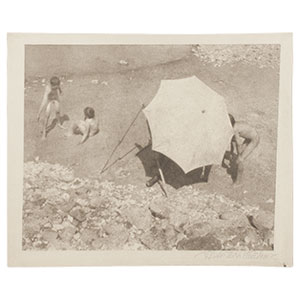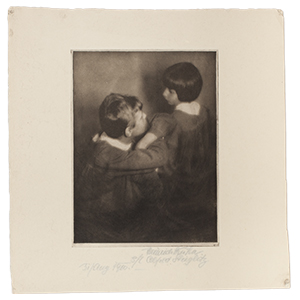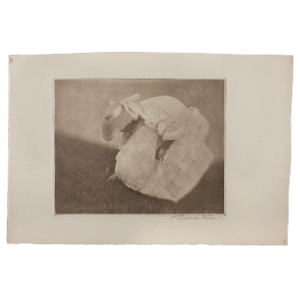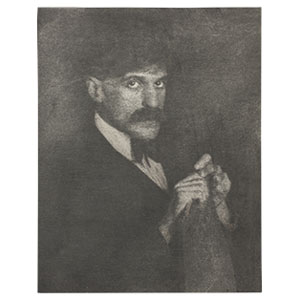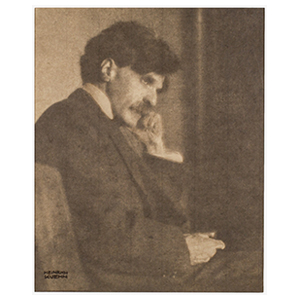Heinrich Kühn
Austrian, born Germany, 1866–1944
Heinrich Kühn was a vocal advocate for photography as an art form, held membership in a variety of camera clubs, and passionately explored new photographic techniques and processes.
Kühn belonged to the so-called Viennese Trifolium, a trio of photographers who took up gum bichromate printing after its rediscovery just before the turn of the century, and in 1896 he was the first to exhibit gum bichromate prints in Germany. Kühn was a deliberate photographer, sketching out his compositions beforehand and posing his children in a special “photo wardrobe” of black-and-white clothing. He developed a custom soft-focus lens and a hybrid gum-gravure process, which allowed him to produce the soft, textured prints favored by Pictorialists. He was also an enthusiastic adopter of the autochrome, an early color photography process.
Stieglitz and Kühn had known of each other’s work since at least 1894, when Stieglitz praised Kühn’s photographs in a review of the Milan International Exhibit. After finally meeting in 1904, they became fast friends. Stieglitz later exhibited Kühn’s work at 291 and featured 15 of his photographs in the January 1911 issue of Camera Work. Although the two remained close, their aesthetic interests diverged. As Stieglitz gravitated toward straight photography—an approach that eschewed painterly effect and manipulation in favor of sharper pictures that emphasized the camera’s mechanical attributes—Kühn remained a Pictorialist, continuing to perfect handcrafted images of pastoral and family scenes.


